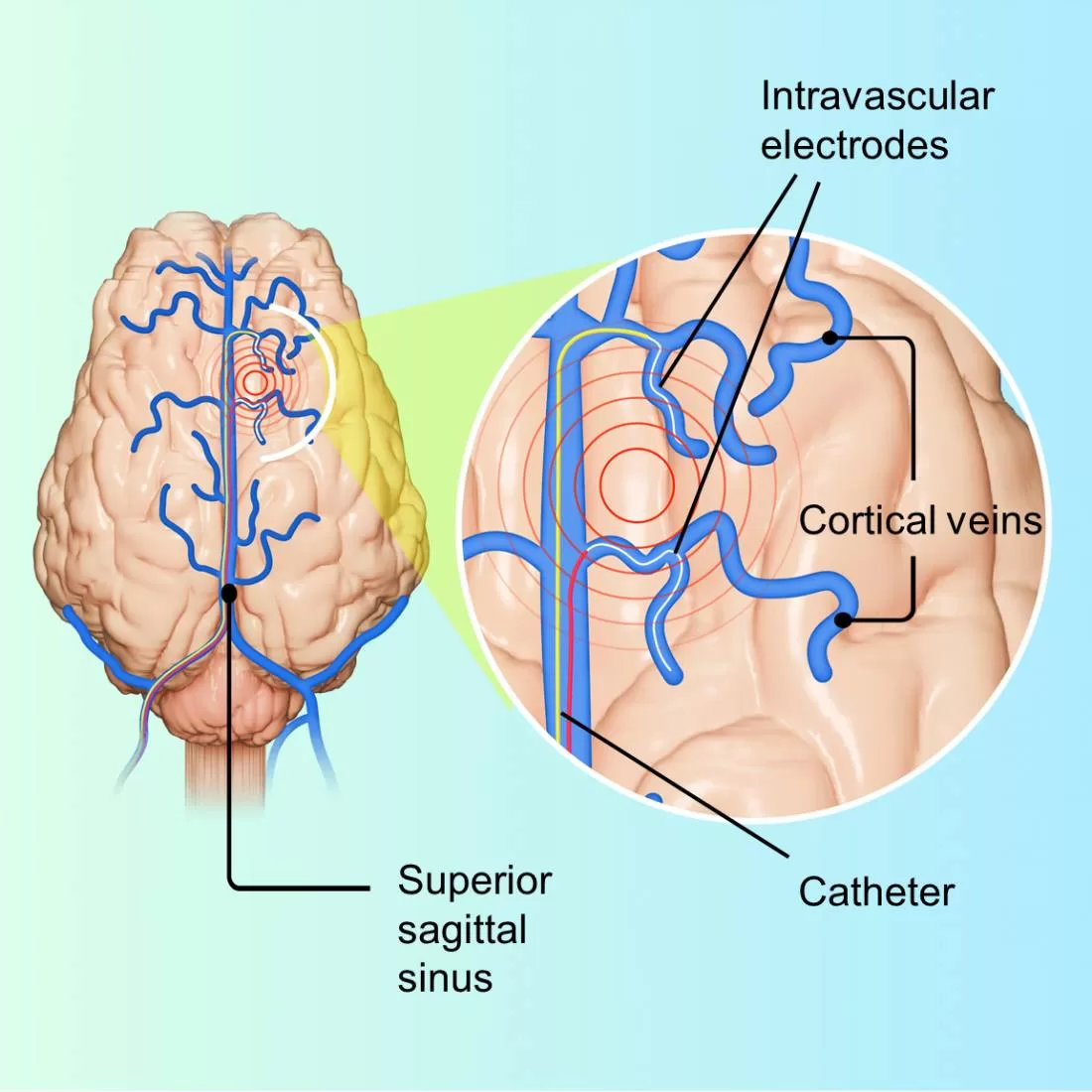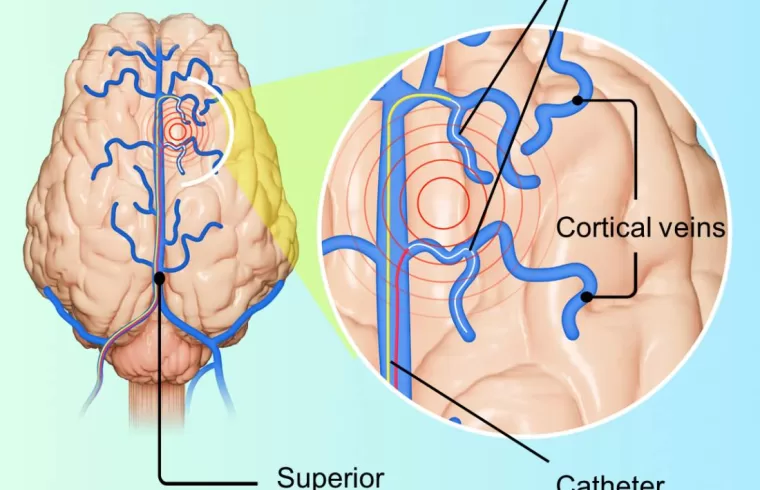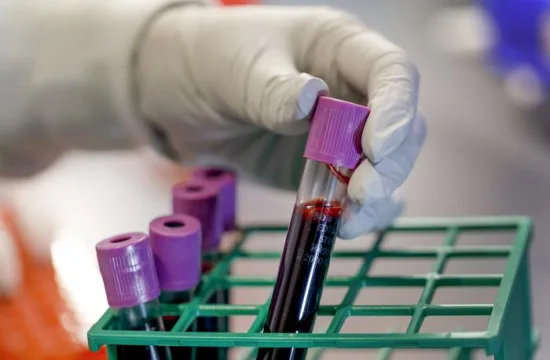
Osaka, Japan — Scientists at the University of Osaka have created a new way to monitor brain activity using blood vessels, avoiding the need for risky brain surgery. This breakthrough could help treat conditions like epilepsy and lead to better brain-computer technology.
Right now, doctors must perform invasive procedures to measure brain signals—either by opening the skull or inserting electrodes into brain tissue. Less invasive tools like EEGs are safer but not very precise. The new method offers both safety and accuracy.
Led by Professor Takufumi Yanagisawa, the team used a thin tube called a catheter to place tiny wire electrodes into veins in pig brains. These electrodes recorded brain signals just as well as traditional methods. They even reached deep brain areas that are usually hard to access without surgery. When they stimulated certain brain regions, they triggered muscle movements in the face and shoulders.
Dr. Takamitsu Iwata, one of the lead researchers, said this technique could improve how doctors diagnose and treat brain disorders. It might also help people with severe paralysis use brain-computer systems to communicate and control devices.







